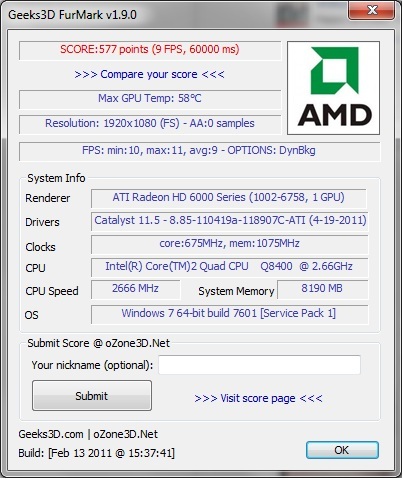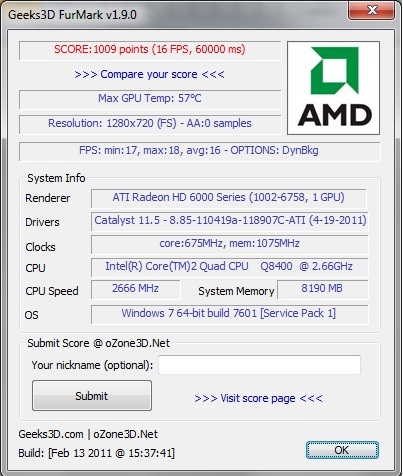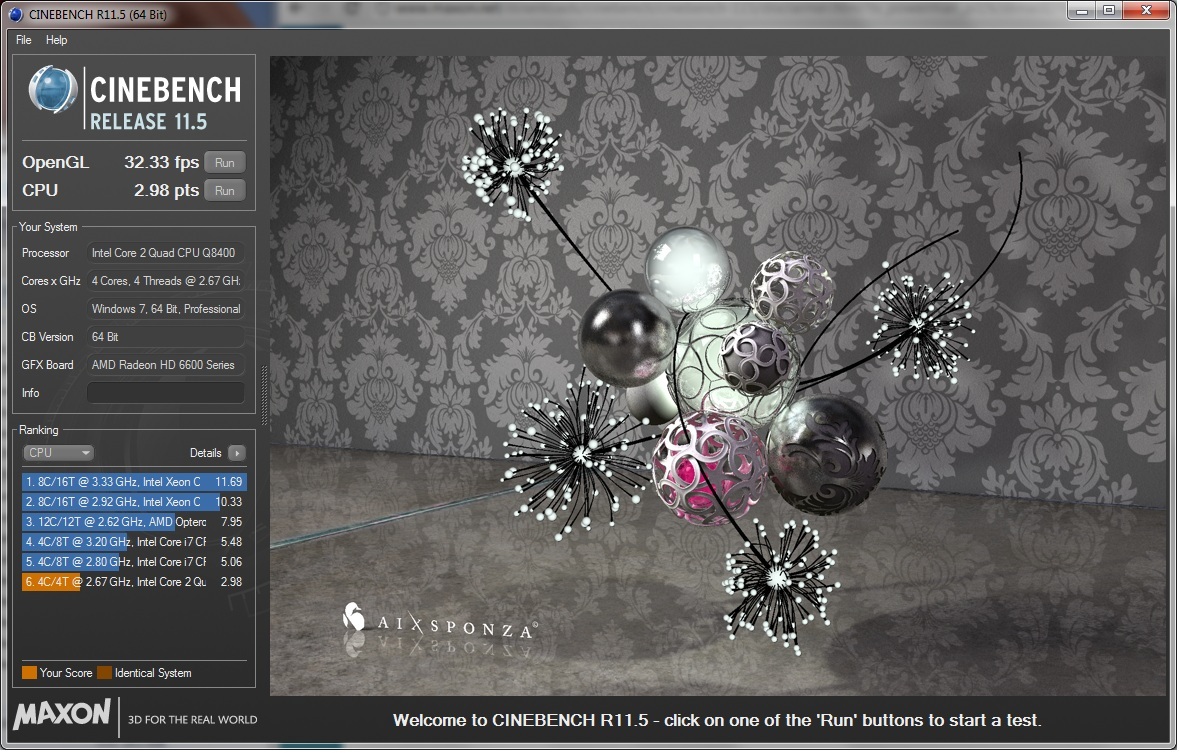Testing Rig:
- Motherboard: Asus P5N-d
- CPU: Intel Core 2 Quad @ 2.66
- RAM: 8 GB DDR2
- PSU: Coolermaster 550w
- GPU: Radeon 6670 Ultimate
- Case: Coolermaster HAF 922
- Storage: 64gb Kingston SSD-now, 500GB WD Caviar
- OS: Windows 7 Professional SP1 (this card brought the Windows Experience Rating up to 7.1 on a scale to 7.9)
Furmark
Homepage link: http://www.ozone3d.net/benchmarks/fur/
FurMark is a very intensive OpenGL benchmark that uses fur rendering algorithms to measure the performance of the graphics card. Fur rendering is especially adapted to overheat the GPU and that’s why FurMark is also a perfect stability and stress test tool (also called GPU burner) for the graphics card.
I was a little wary using Furmark on this card. I’ve seen Furmark overheat cards with large hyperactive fans. I was in for a surprise when this card kept it under 60°C for both 720P and 1080P tests. The results show the hybrid crowd this card is geared towards. While the FPS’s are a little low during both tests, I’m not going to give up hope of better FPS in an actual gaming environment.


Cinebench
Cinebench is a benchmarking tool that tests the computer’s ability to process graphical images. Cinebench tests both the CPU and GPU using a scene of a car chase. We see that during the test, the card kept an average of 32 FPS. This is just above the 30FPS needed for quality gaming.

Enough with the numbers, lets get to the games.


[…] Sapphire Radeon HD 6670 Ultimate Video Card @ TechwareLabs […]
[…] Sapphire Radeon HD 6670 Ultimate Video Card @ TechwareLabs […]
[…] Sapphire Radeon HD 6670 Ultimate Video Card @ Techwarelabs Sapphire Radeon HD 6950 2GB Dirt 3 Edition Video Card Review @ TweakTown Sapphire […]